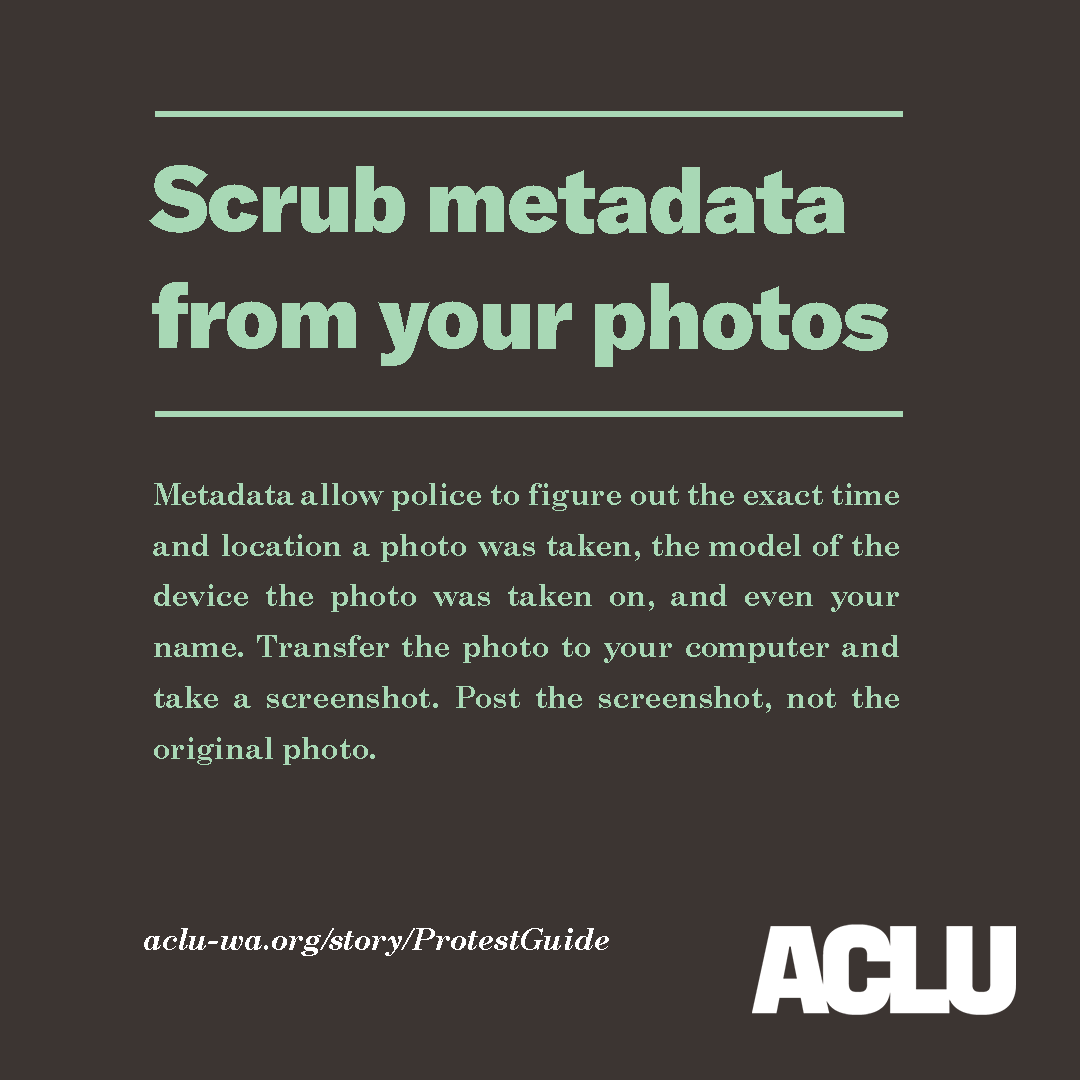Published:
Monday, June 8, 2020The right to protest is a fundamental human right guaranteed by the U.S. Constitution and the First Amendment. As the nation takes to the streets to protest the police killings of George Floyd, Breonna Taylor, and countless other Black lives, it is important to protect your digital safety. The following are basic tips to protect your privacy before, during, and after a protest. Protecting your privacy will help keep yourself, your information, and other protesters safe, as well as get your message out.
Use these tips to defend yourself against police surveillance and exercise your right to protest.









- Fully encrypt the data on your phone. If your device is confiscated by police, or if it is lost or stolen, full-disk encryption can help protect the information on your phone. If you have an iPhone and you have a strong password (6-12 random digits), your phone is encrypted. If you have an Android phone, open your “Security” settings and select “Encrypt phone”. The stronger your password, the harder it is for police to get into your phone.
- Turn off Face ID and Touch ID. Face ID and Touch ID make it easier for officers to physically force you to unlock your device with your face or fingerprint and see information about yourself, your family, and the people that you care about.
- Put your phone on airplane mode. Airplane mode ensures that your device will not be transmitting signals while you are protesting and prevents your location from being tracked. Enabling airplane mode when you are not communicating reduces the amount of radio signals transmitted, and the chance that you will be tracked.
- Wear a face mask + sunglasses. Face masks and sunglasses not only guard against airborne illnesses, but also make it more difficult for police to identify you using facial recognition technology.
- Leave your car at home. Police are using automated license plate readers (ALPRs) to track protestors. If you can, riding a bicycle or walking to the protest will help you avoid being tracked.
- Be mindful of posting photos and videos of other protesters. If you post photos or videos online where protesters’ faces, tattoos, or unique clothing are identifiable, police may track them down, arrest, or harass them. Obscure unique identifiers and the faces of anyone who has their eyes or mouth visible in photos. If live streaming, avoid capturing faces and be mindful of what you post.
- Scrub metadata from your photos. Metadata allow police to figure out the exact time and location a photo was taken, the model of the device the photo was taken on, and even your name. Transfer the photo to your computer and take a screenshot. Post the screenshot, not the original photo.
- Back up your data. If the police take away your phone, you may not get it back easily. Back up your data regularly and store that backup in a safe place.
Use these tips to defend yourself against police surveillance and exercise your right to protest.













